Digital Textile Recycling¶

| Path | Target | Duration | Skills |
|---|---|---|---|
| Curiosity | Kids 8 to 18 | 1,5 h | Crafts, 2D & 3D Digital Fabrication |
Introduction and context¶
Digital Textile recycling is an activity designed for children to customize their tote bags with a meaningful message using digitally fabricated stamps and stencils.The goal is to encourage a conversation about meaningful making and responsible production, and to use digital fabrication machines and creativity for an environment-friendly message.
The aim of this workshop is to introduce the cycle of water and the importance of recycling and saving water to the kids. 3d printed and lasercut stamps and vinyl-cut stencils where made during the activity and used to show parts of the stages of the water cycle.
The customizarion f the totebags was made wuth the stamps using textile paint. Once the tote bag were customized, they were used by the kids to collect rubbish from the seas and coasts, which can be recycled, and add them to the recycling bins.
With this activity the children can be introduced to the Sustainable Development Goals and how to act locally on a global matter.
Objectives
The aim of this activity is to introduce the cycle of water and the importance of recycling and saving water to the kids while making a textile item (tote bag) with a message.
Learning Outcomes:
- Understand the cycle of water and water scarcity locally
- See how the digital fabrication's machines are working
- Use textile paint to decorate tote bags with the stamps that have been made
- Empowerment and responsibility by discussing an idea on how to use the bags to help the environment
Target audience and context of use
This activity is suitable for people aged between 6-99 years old, as long as the participants are careful not to stain their clothes with the textile paint!
This activity was conducted for kids (6-18 years old) that were passing by in an outdoor space by a busy pedestrian street on the island of Tinos, but it could be conducted in different places indoors or outdoors, in schools, neighbourhoods, festivals, museums, cultural centers etc
Make sure kids wear aprons if provided, to prevent textile paint from staining their clothes or simply let the kids know they need to be careful.
Preparation and materials¶
Dive into the slides presentation provided here, to understand the step by step instructions.
Create your team of facilitators and organize some testing sessions and brief meetings for coordinating with facilitators.
Check that all the tools and materials are available and set up the logistics for the venue.
Have a plan B if your venue is outdoors, protect the participants from sun, rain or other weather conditions
Prepare in advance:
- Prefabricated parts of the stamps (3d print bases, lasercut rubbers and vinyl cut stencils. New models can be produced during the activity.
- Common materials tray:
- sets of stamps - textile paint tampon - clean wet cloths - sets of stencils - textile paints - brushes - pegs - textile marker
Kit of materials for participants

- Tote bag
- Vinylcut stencils ( File)
- Textile paint and brush
- Kit of parts for stamps (File)
- Textile paint tampon
- Clean wet cloths
- Pegs
- Textile markers
- Wooden surface or newspaper
- Pen and paper
Equipment, Tools and Materials
- Tables for the kids,
- Table for the machines
- TV or projector to show the presentation (not mandatory)
- 3d printer
- vinyl cutter
- Laser cutter (could be substituted by the vynil cutter with blade for 3mm foam)
- 2 glues
- sets of stencils
- textile paint tampons (4 different colours)
- 4 brushes
- 8 clean wet cloths
- 16 pegs
- Tote bags (1 per participant)
- 2 textile markers
- Glue
- Textile paints (2 different colours)
Step by Step Instructions¶
STEP BY STEP overview

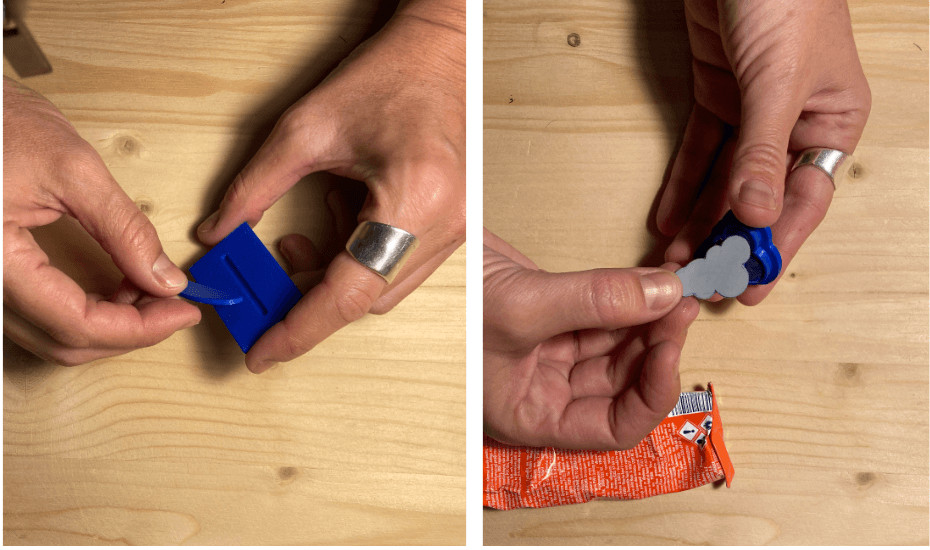

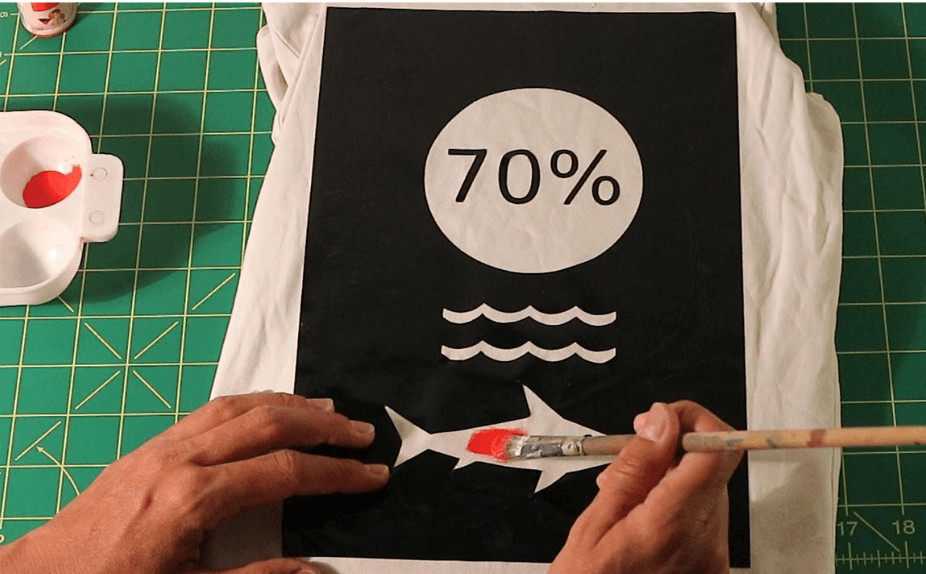
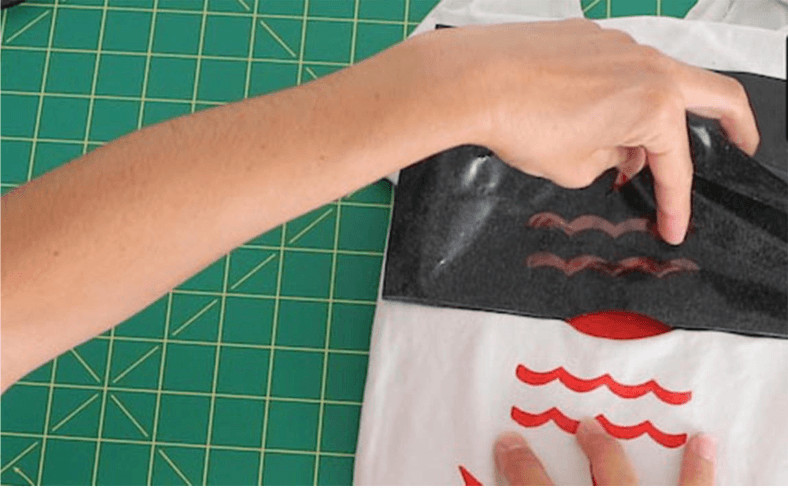
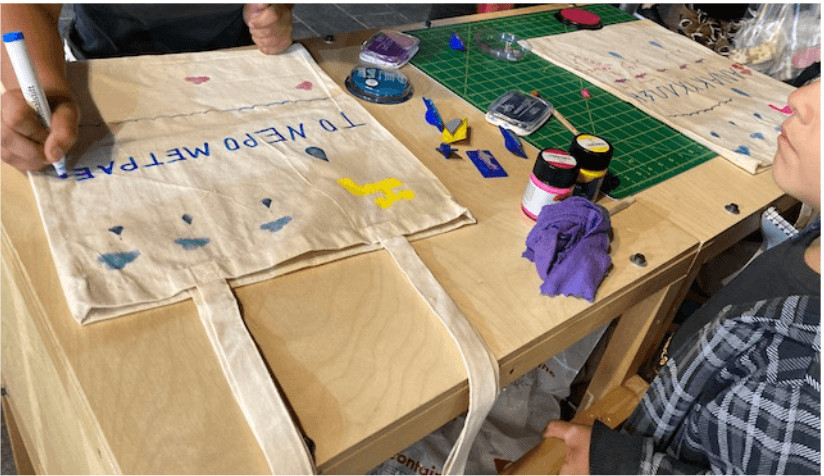
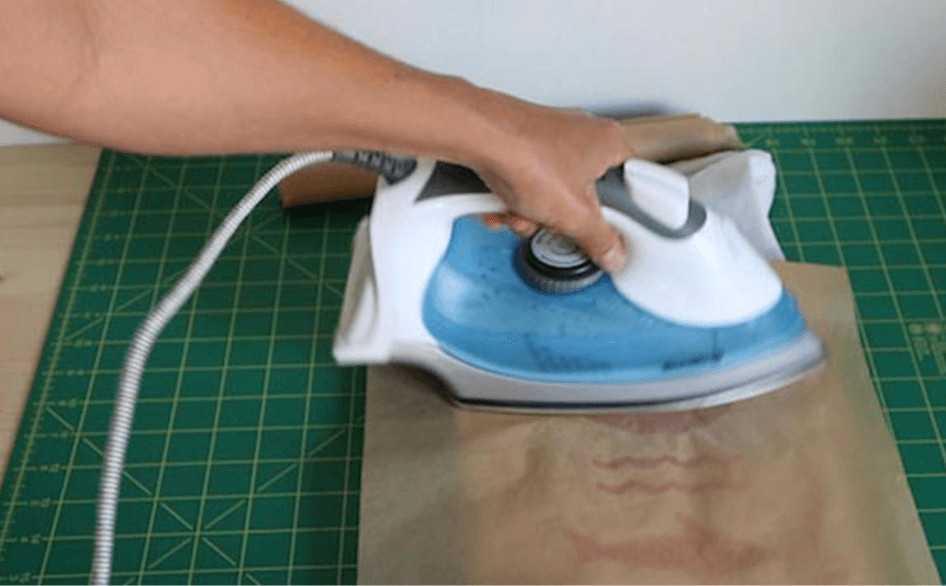
Safety rules & Tips
- Provide aprons to avoid painting kids clothes
- Tip: hide the cables for participants not to trip over the machines
Presentation for the class
Flyer for participants
Downloadables¶
| Presentation | Brochure | Designs |
|---|---|---|
| Presentation | Brochure | Arrow,Cloud, Drop, Sea, Laser stamps, Vinyl stamps |
Tips to facilitate the activity in context (to-do / not do)¶
-
To-do
-
For the better understanding of the activity, it is recommended to have a sample ready made: One stamp ready made and one tote bag
-
Not do
-
Work in a hurry
- Deliver the material in a disorderly way
Estimated cost
...
Always consider to find local providers.
| Quantity | Description | Link to vendor |
|---|---|---|
| 1 | cloths | AMAZON |
| 1 | Pegs | AMAZON |
| 1 | Fabric markers (set of 10) | AMAZON |
| 2 | Brushes (set of 3) | AMAZON |
| 8 | Cotton tote bags | AMAZON |
| 8 | Fabric inkpad | AMAZON |
| 1 | Fabric paint | AMAZON |
| 1 | Foam 2mm | AMAZON |
| 2 | superglue | AMAZON |
| 1 | 3D printing filament | AMAZON |
| 1 | 30cmx30cm vinyl sheets | AMAZON |
| 1 | A4 Rubber sheets for lasercutter | AMAZON |
Licence and credits¶

Attribution — ShareAlike CC BY-SA This activity has been designed by Olivia Kostifa for shemakes.eu. It is based on Decode's learning experiences
Related and supporting activities/modules
It can be combined with the other topics of Topic/skills, within the Sustainability and Industry 4.0 Packages of Fabricademy.